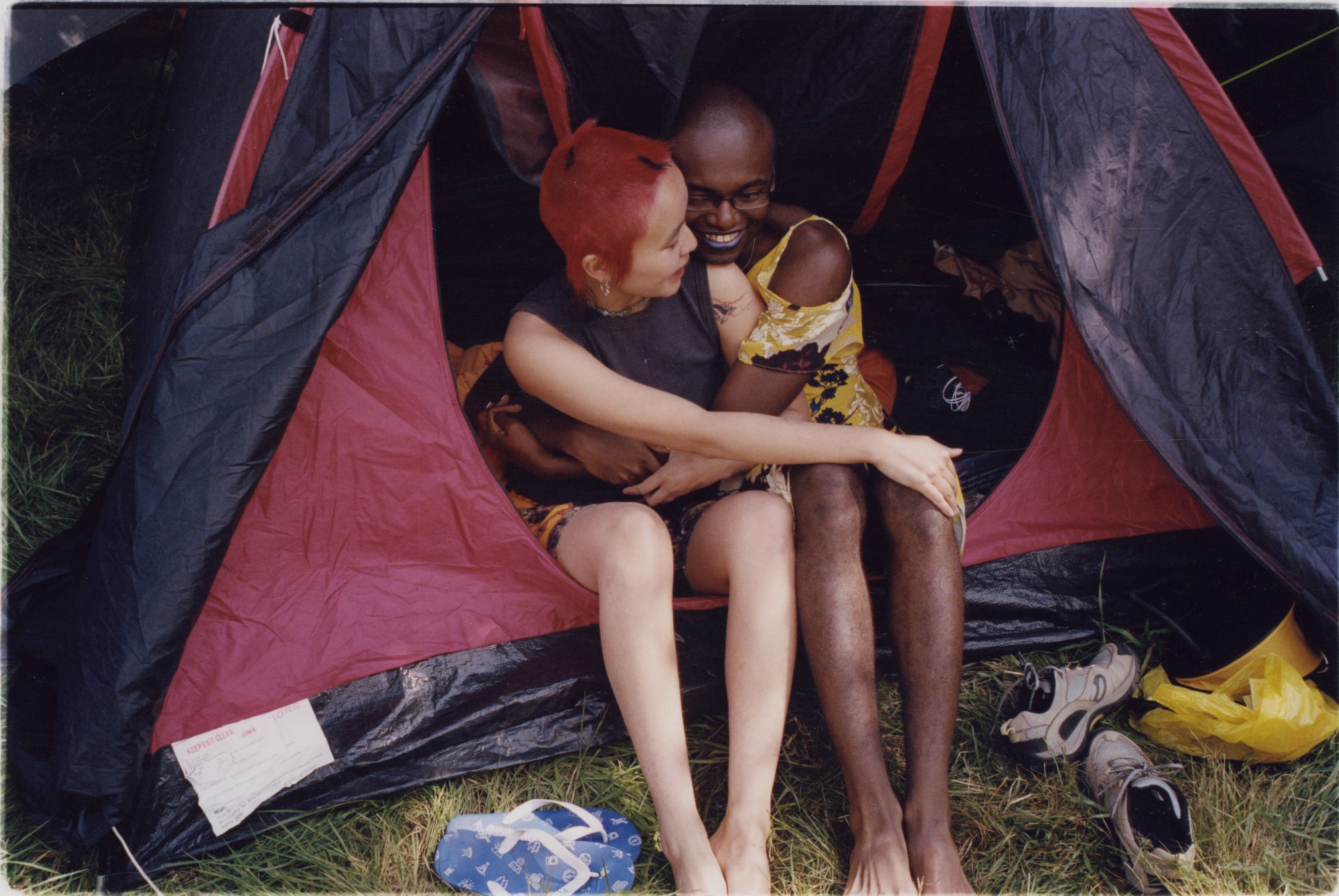“When I first started, everyone thought I was ‘doing representation’,” Jesse Glazzard, the London-based photographer, says. “But that’s such a big responsibility to hold. I don’t want to represent anyone but myself. I’m more interested in just shooting the people around me.” Indeed, for his new series of personal works, For Love or Nothing, he did just that, documenting the luxury of care, rest and intimacy in his London community. They are, however, a response to pressure that Jesse – a celebrated fashion photographer who is trans — has often felt to imbue his work with a politic. In his recently opened exhibition at 10 14 Gallery, curated by Pacheanne Anderson, however, he instead offers tender glimpses into a network of individuals facilitating restorative pleasure despite a bleak British context.
“It just happens that most people around me are trans, and so my personal work ends up like that,” he notes, referring to the subjects of the images that make up the show. And indeed, Jesse’s interest in his situation rather than his identity is clear in the documentation of his recovery post top-surgery. A well-trodden subject matter in contemporary photography, Jesse turns his focus away from his mending body and onto instances of care and rest offered to him by others: intimate bathroom embraces with his partner, blooming bouquets sent by internet acquaintances and his abundance of medication. “People make a lot of work about the scars and how the surgeries change us, but this kind of work can sensationalise the trans body,” he says. “I was more interested in how my partner at the time was so good to me, and how luxurious receiving this care felt. She looked after me in a way that I don’t think I’ve ever been looked after. I felt like I’d actually rested for the first time in my life.”
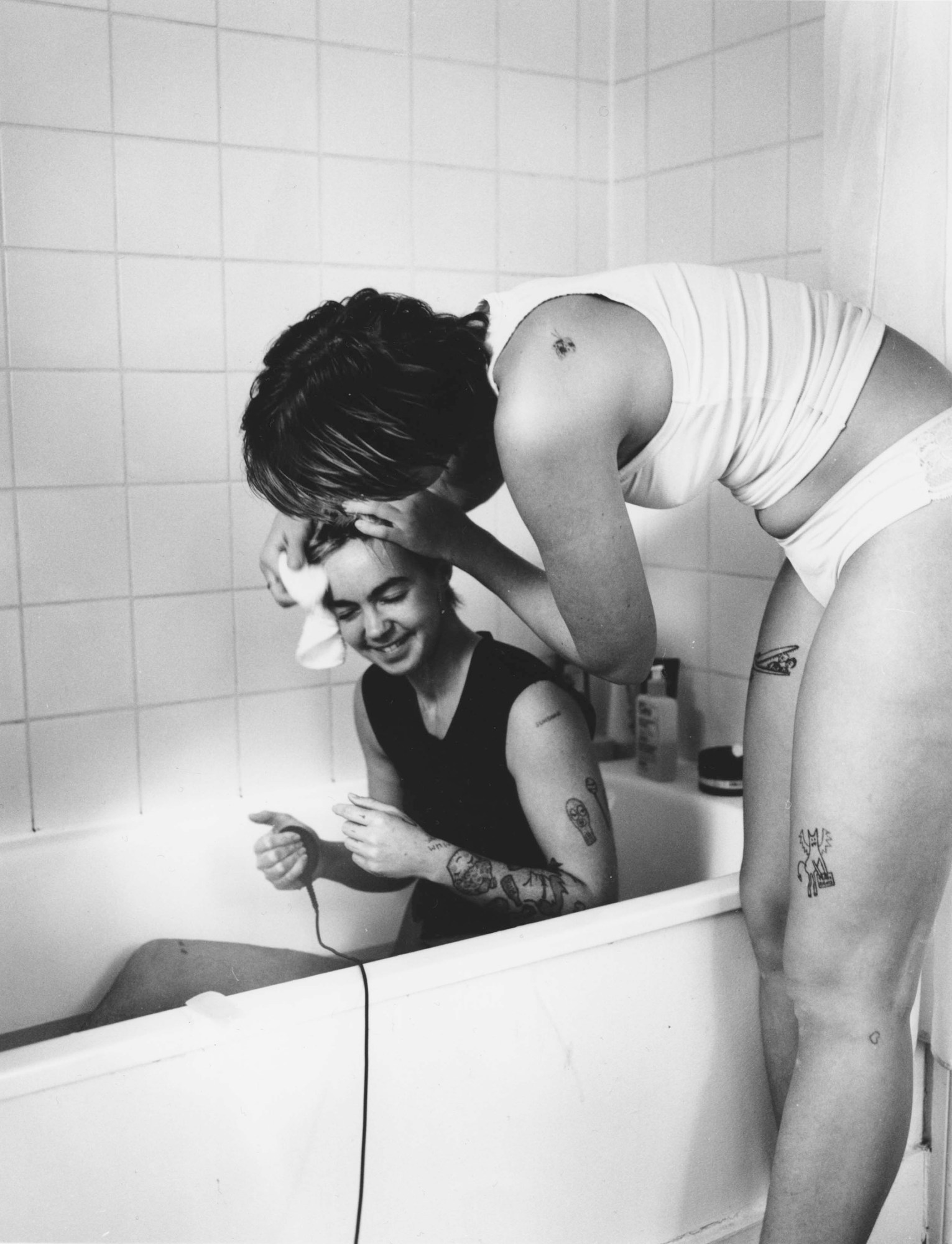
The luxury of rest and care recurs throughout Jesse’s work, none more so than in his depiction of Camp Trans, a landmark festival held in Bedfordshire this summer. The festival, set up to provide a leisure space exclusively for trans people, was radical not because of the identity of its attendees, but because of their communal search for restoration in spite of a national system that makes trans healthcare especially difficult to access. This is made all the more significant when done in a countryside setting, a space not often afforded to marginalised groups. “When I was going into that space, it knew it was history: it felt like the first time we’d had a space in nature,” he reflects. “We all move to the big city because that’s where we can exist, but being in nature takes us out of the clubs and the streets, and gives us a space where we can feel safe, be topless, be naked, without getting pissed or high. Even though not many people like sleeping in tents — especially the femmes! — they still camped out for the sake of being together.”
Evoking the 18th-century pastoral paintings of Antoine Watteau or the lackadaisical decadence of Georges Seurat, Jesse’s painterly touch honours the significant luxury of these intimate moments of shared rest. “The great thing about Camp Trans is that people just rest, which itself is a luxury. At first, I didn’t realise that I was documenting privilege, but coming from an underclass background, it’s subconsciously a core element of what I do.” However, Jesse’s idyllic depiction of rest and relaxation is knowingly fantastical, conscious of the fact that — in Britain’s current political and economic circumstances — class struggle is inescapable. “Whilst others were resting, I was just shooting — I didn’t sit down the entire weekend. People in that space come from cash, and if they don’t, then they’re working, like me. I think people are hyper-focused on transness and forget all the other things; I don’t think class is spoken about enough in those spaces.” Though perhaps we needn’t politicise these images so intensely. “It didn’t bother me too much, it’s just nice to see people resting,” he concludes. Beyond the necessity of politics, perhaps these images can just be beautifully composed images capturing fleeting moments of community-driven joy.
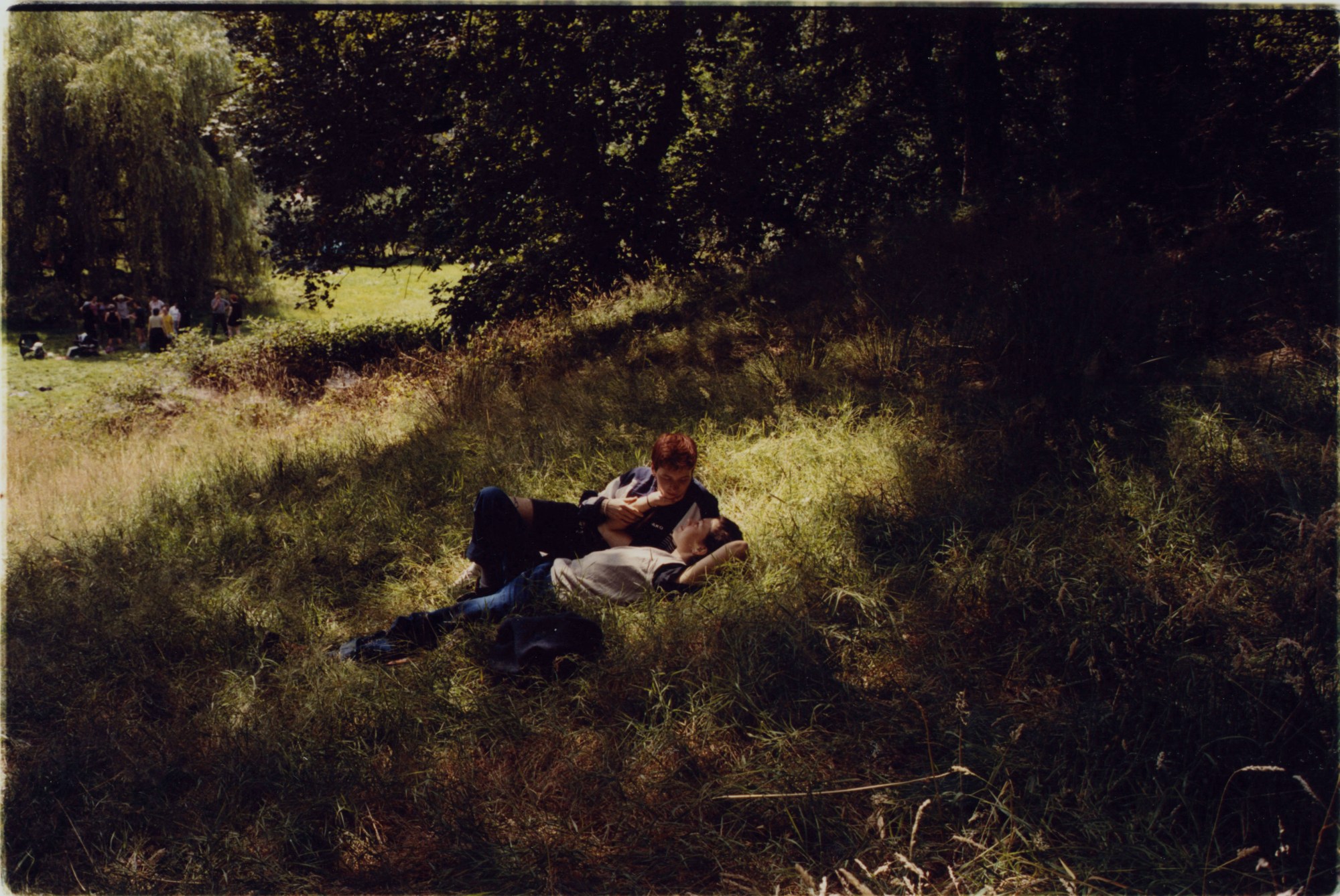
The collection also features a monochrome series of portraits of Jesse’s friends, some posed ferociously in a boxing stance, others incidentally captured while hanging out. “I wanted to shoot these predominantly in black and white to make the image about the subject,” he says, a decision made in order to highlight the stark contrast between these deeply personal images and the hyper-saturated imagery they find themselves producing for commercial projects. “I associate colour with brands wanting the images to look as bright and alluring as possible. Shooting colour is a luxury – it’s expensive. That’s why it made sense to shoot Camp Trans like that.”
Contrary to the speedy demand of commercial jobs, Jesse takes time to develop his personal work. For him, spending extended periods in the dark room allows for a continued intimacy with the subjects. “It lets me spend time with the work and be physical with it in a slow way. The shoot could be what, 10 minutes? But then it could take me six months to get an image back to someone,” he says. “It’s nice to give someone a print after a few months; it lets them know that even if they haven’t heard from me, I’ve been thinking about them.” This slower, care-driven approach also allows Jesse to really get the images right, a precision that often gets lost in the fast-paced commerce-oriented demand of social media. “I don’t want to rush something for the sake of getting out an Instagram post. I don’t really want to put my work on Instagram anymore. The people in images are worth more than an Instagram post. They’re all amazing and deserve to be in places that aren’t so disposable, visible or accessible, like in books or exhibitions.”
His perspective is a product of Jesse’s profound sense of value for the lives he photographs, foremost because they are people he loves. Honouring their image by laying them in books and exhibitions is perhaps an offering back of rest. In these settings, less accessible and disposable than digital media, these images are forgiven the task of viral political representation, and instead can be just what they are: beautiful.
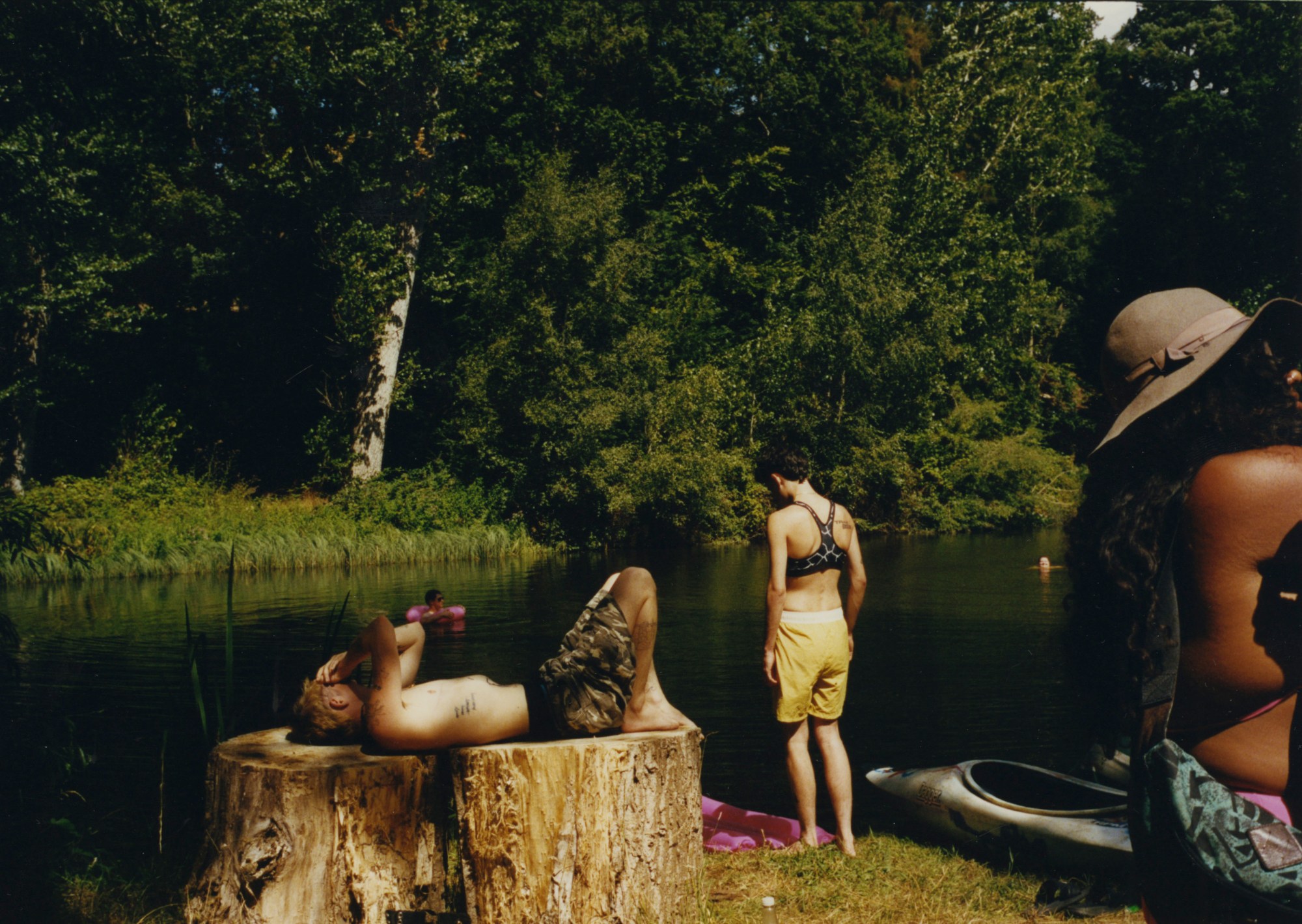
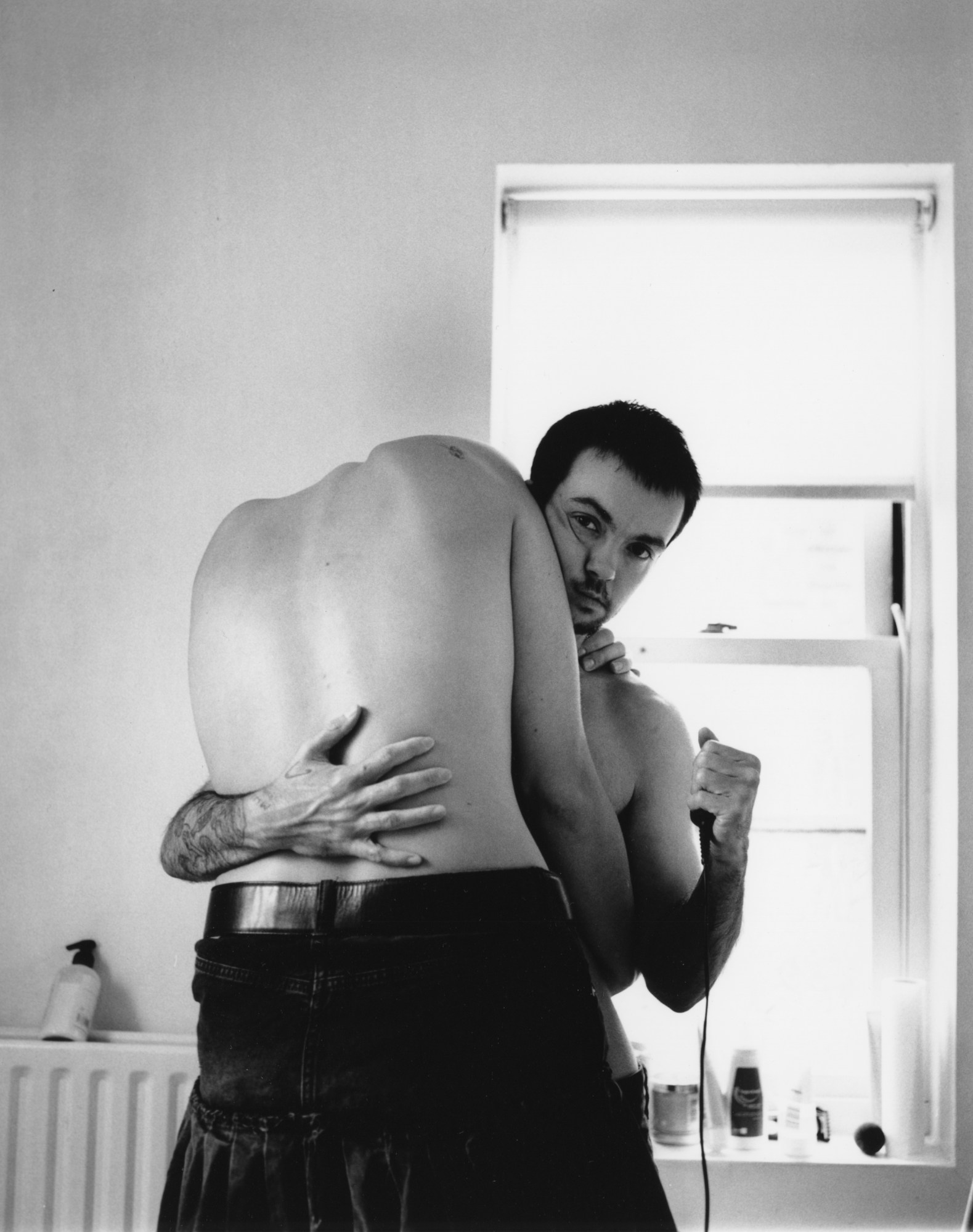
For Love or Nothing is open at 10 14 Gallery until 30 November. The last day of the show marks the launch of the series’ inclusion in The British Journal of Photography.
Credits
Photography Jesse Glazzard
